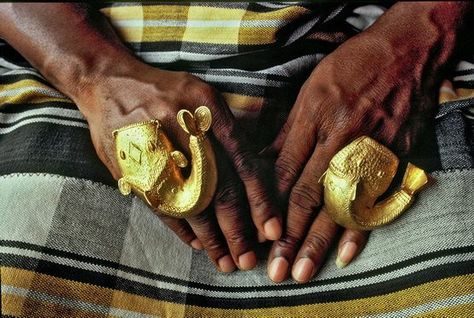BLOG POST 2: FAITH
Preparing to write this blog provided me with the opportunity to “check back in” with my positionality statement. In my statement one of my identities is as a black woman who was raised in a very religious household. Firstly, Anglican and then evangelical and Pentecostal. I currently consider myself to have a strong sense and reliance on faith and spirituality, rooted within the teaching of Christianity.
Britain is part of what is called a “moderate secular” society. This is less about one sided control and more about mutual autonomy and support of faith and religions. Public space in society is given to organised religion and the ethos and examples of moderate secularism can help guide public institutions such as universities. (Modood and Calhoun, no date)
UAL’s 2018 EDI-Report shows that the majority of our students 57% consider themselves non-religious (which falls in line with the current social trend of belief without belonging and “general spirituality”) whilst 23% identify as having Christian beliefs. Other religions such as Jewish, Hindu, Muslim etc each account for under 5% of the student population. * (See Appendices 1 for full data)
Understanding how our faith identities intersect with our social identities, can help us to better understand religious diversity within higher education.
I found the research shared enlightening and engaging but also overwhelming in regard to my responsibilities as a teacher, and how to integrate the material and resources into my current practice. This is because I do not feel a tangible presence of inclusive practice regarding faith within my specialist field and within the fashion programme at CSM which I am part of.
It is worth noting that if knowledge of faith and religion is already unevenly taught and studied in wider HE institution, what can be done with faith inclusion and knowledge within CSM, where it’s not a part of any subject I teach?
Faith and religion can present itself as an opportunity for students to express highly valued principles of freedom of speech, and the expression of a creative/artistic identity. How do I apply what I am learning about faith and the various religious identities of my students? What happens if and when, in the name of freedom of creative expression, there is a push against a perceived boundary? Where students with particular religious views find work or images created by other students offensive.
At this point, regarding my own practice, I have more questions than answers.
However, when listening to the lecture on Creed by Kwame Anthony Appiah, an attendee asked:
As an educator, what processes can we be involved in to support inclusion? The answer was actually quite simple. “Be open to having conversations across the differences.” (The Reith Lectures – Kwame Anthony Appiah – Mistaken Identities – Creed – BBC Sounds, no date)
Teachers should be aware of the complex relationships within student groups and be prepared to facilitate open discussions in groups. Use potential areas of conflict as a time to discuss differing viewpoints and it’s wider impact. (Finnigan and Richards, 2015)
In regards to my teaching practice, exploring, reflecting and critiquing the current practice or lack thereof of teaching multi faith groups, sharing with students useful resources on living in a multi faith society would be a positive first step.
I think having my own faith and religious identity, embedded by an understanding of intersectionality and how religious identities can shape social identities, will help me have an empathetic approach to facilitating and creating a safe space for open discussions……Hopefully!
Appendices:
- UAL EDI-REPORT 2018 – Student data

- UAL EDI-REPORT 2018 Staff data

REFERENCES:
Modood, T. and Calhoun, C. (no date) Stimulus paper. Available at: http://www.tariqmodood.com/uploads/1/2/3/9/12392325/6379_lfhe_stimulus_paper_-_modood_calhoun_32pp.pdf.
The Reith Lectures – Kwame Anthony Appiah – Mistaken Identities – Creed – BBC Sounds (no date) www.bbc.co.uk. Available at: https://www.bbc.co.uk/sounds/play/b07z43ds (Accessed: 19 June 2023).
Finnigan, T. and Richards, A. (2015) Embedding equality and diversity in the curriculum: an art and design practitioner’s guide. The higher education academy.

A very considered contribution Wande, your blog has left me with much to think about.
I agree that it is a challenging prospect to increase knowledge of faith in HE, and I am also aware that converstaions around faith can be highly charged for people across the various schools of thought.
However, as you have stated, your spiritual background places you in a great position to lead with empathy when a boundary is reached in creative expression. The conversations around those can yield some valuable learning experiences for all involved when navigated with care and respect.
With regards to faith inclusivity in fashion, for me the conversation around creative expression and modest dress come to my mind. Understandibly modest dress means different things for different people, but there is an interesting conversation to be had there.
I wish you the best of luck in this endeavor, HE does not make these kinds of situations easy for any of us!
I share your sentiments around managing conflict with very personal and sensitive topics. I think utilising ground rules at the start of the session will be key. For those that teach fashion, myself included, we almost forget that there are fashion and symbolism choices within religious clothing. Unpacking this may be an opportunity for students to review how logo, pattern, shape, and material can convey a message in their design. I recently went on a trip to Turkey and found out why the fish symbol is used within Christianity. Although I am not Christian I found this fascinating and it did not impede on my own belief system as it was more related to the history of Christianity. The history of clothing within religious practices could be an interesting topic for students – how they then reinterpret these ideas in their own design could cause some conflict and so it may be important to set some rules around that also.